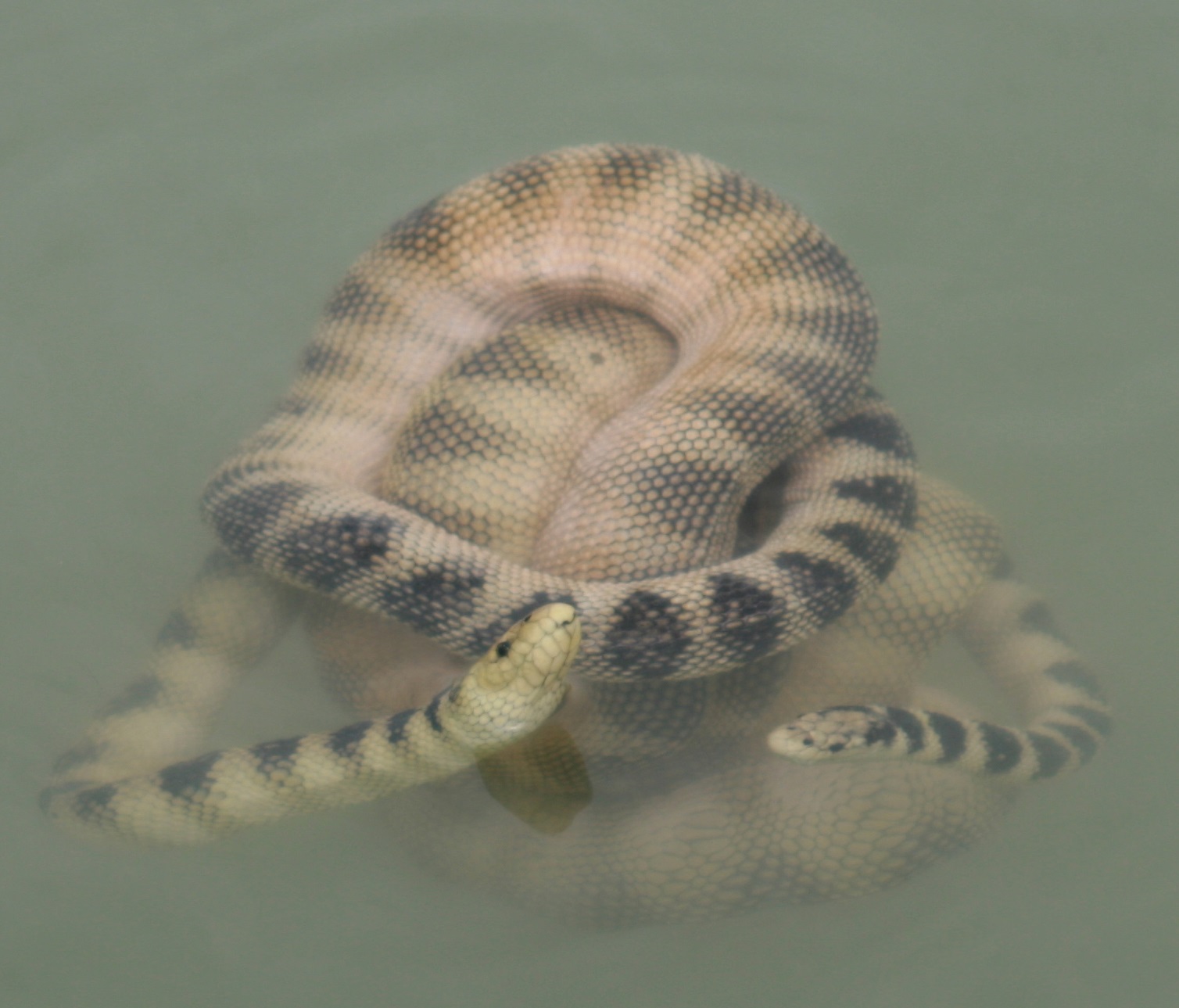There are more than 60 morphologically and ecologically distinguishable species of true sea snakes (subfamily Hydrophiinae), which comprise the largest group of marine reptiles distributed through tropical and subtropical coastal waters of the Indo-Pacific region. Sea snakes have evolved for living in the ocean more than any other living marine reptile. In contrast of sea kraits, sea turtles, marine iguanas and salt water crocodiles those at least for laying their eggs are depended to the terrestrial habitats, sea snakes never leave the water as they can give birth to live offspring in the water.
- Two annulated sea snakes (Hydrophis cyanocinctus) intertwined with each other in a mangrove channel at the western Gulf of Oman.
As predators, sea snakes play an important role in the food-web of Indo-Pacific (sub) tropical coastal communities. Further, venom of these highly venomous snakes comprises several putatively medically important protein components. Nonetheless sea snakes are threatened through their geographical distribution range by various anthropogenic activities. In the Gulf of Thailand, local fishers annually catch about quarter of million sea snakes for selling in South Asian markets. It is known as the world’s largest marine reptile harvest today (ref). Further, incidental bycatch in fishing nets is a serious threat for sea snakes through Indo-Pacific region. Previous studies also showed that in contrast of other marine vertebrates, sea snakes need drink freshwater by lapping rain water from the ocean’s surface (ref). Therefore, dehydration during long drought seasons caused by man-made climate change can also lead high mortality among sea snake populations.
- A beaked sea snake (H. schistosus) removed from an invisible nylon net and discarded on the beach. Entanglement in fishing nets is one of the main threats for sea snakes along their geographical distribution range. Nonetheless, most people think that these tube-like creatures do not entangle in fishing nets as their body diameter is smaller than the mesh size of most fishing nets. This is absolutely wrong as they can easily become entangled in fishing nets due to their long body.
The Persian Gulf is known as the westernmost extent of sea snakes, except for Yellow-bellied sea snakes (Hydrophis platurus), the only planktonic and the most widespread reptile on the planet, which is distributed from the eastern Pacific to the south of Africa. The Persian Gulf and its adjacent Gulf of Oman are home of 10 species of true sea snakes (for more details click here). Incidental bycatch in fishing nets and environmental pollution are the main threats for these amazing marine reptiles in the Persian Gulf (ref). Other possible threat for sea snakes in the area could be climate change and long drought seasons.
Our conservation projects for sea snakes in the Persian Gulf
- Ecotourism and marine reptiles (Read more)
- Workshop: fishers and sea snakes (Read more)
- Ecology and conservation of sea snakes (Read more)


